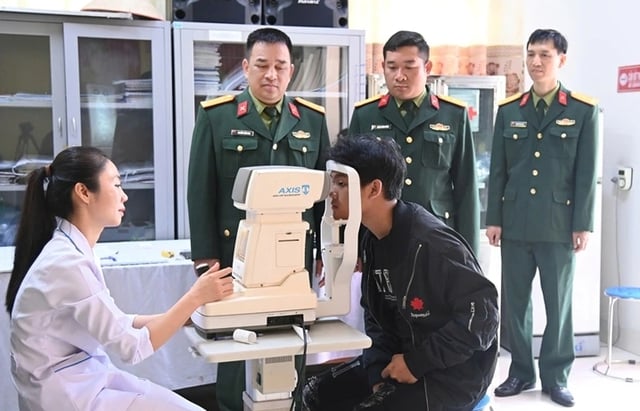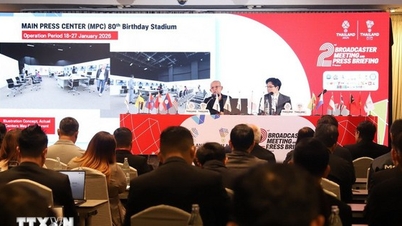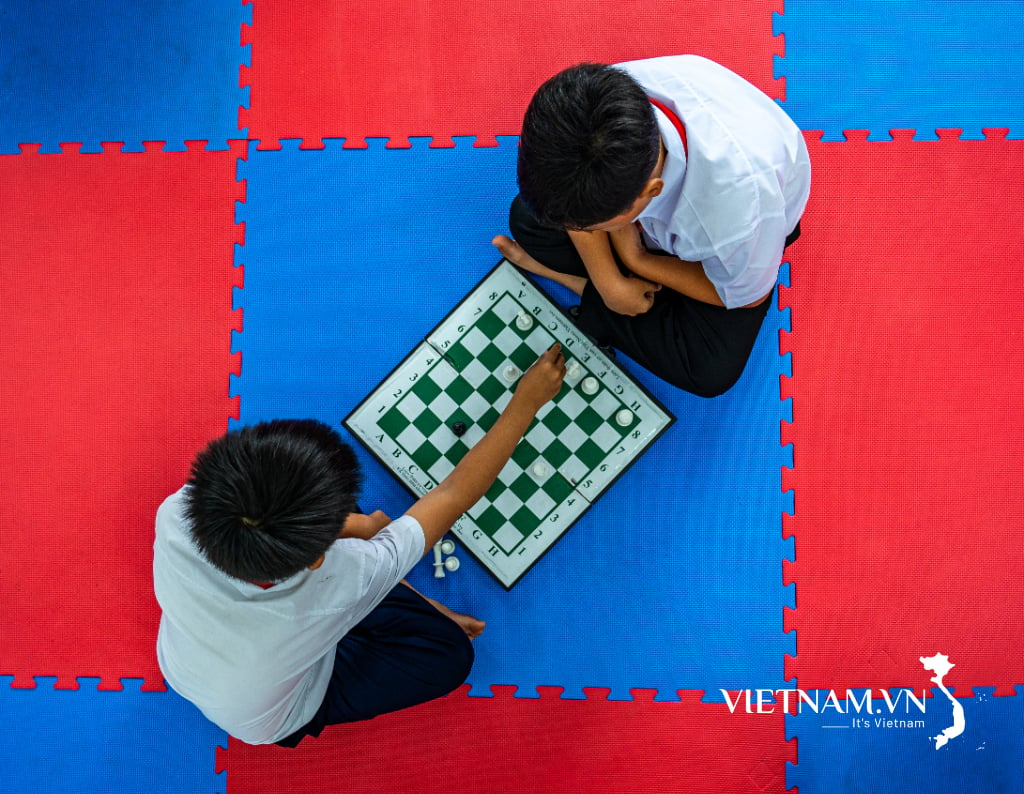Localities across the country are implementing military service examinations in 2026. However, some citizens and parents still have questions about eye examination regulations - one of the important criteria for entrance assessment.

Latest regulations on eye examination in military service examination
PHOTO: PEOPLE'S ARMY NEWSPAPER
Regarding this regulation, in October 2025, the Ministry of National Defense issued Circular No. 106, which amended and supplemented the eye examination process and the method of scoring vision in the health classification standards.
Specifically, visual acuity is the basic standard to assess the vision of each eye. To measure visual acuity accurately, a specialist must directly instruct how to read and perform the test according to the prescribed techniques of the ophthalmology profession. To detect cases where the reader is dishonest or does not know how to read according to the instructions, use an automatic refractometer to check.
The eye chart must have black letters, white background, rows 7/10 - 8/10 must be hung at eye level; sufficient light to read (about 400 - 700 lux) to avoid any phenomenon that causes glare, too bright or too bright shining into the reader's eyes or too dark affecting the reader's vision; the distance between the chart and the reader's place must comply with the chart's regulations; the reader must cover one eye with a piece of cardboard (not cover with hand) and when reading, both eyes must be open (one eye is open behind the cover); the person measuring uses a stick to point under each letter, the reader must finish reading that letter in less than 10 seconds; rows 8/10, 9/10, 10/10 each row can only read 1 letter incorrectly to count the result of that row.
How to calculate total vision of both eyes: if vision is higher than 10/10, it is still only counted as 10/10. For example, right eye 12/10, left eye 5/10, then total vision of both eyes is 15/10.
When calculating total visual acuity for classification, pay attention to the visual acuity of the right eye. The left eye's visual acuity cannot compensate for the right eye's, and the right eye's visual acuity must still meet the prescribed standard.
When checking vision without glasses, if the vision of both eyes is not 19/10, the specialist must continue to check the vision after adjusting the glasses. Normally, the maximum vision of both eyes with glasses must be 19/10 or higher. In case after maximum adjustment of glasses, the vision of both eyes is not 19/10, the ophthalmologist must evaluate and find the pathological cause of the vision loss.
Regarding visual acuity scoring, if the visual acuity without glasses for both eyes is 19/10 or higher, then the score will be based on the visual acuity without glasses. If the visual acuity without glasses for both eyes is less than 19/10, then the score will be based on the visual acuity after maximum correction with glasses.
The Circular also specifically regulates pterygium with grading according to the extent of pterygium creeping into the cornea. Grading according to the extent of pterygium creeping into the cornea includes: level 1 pterygium begins to invade the corneal edge by about 1 mm; level 2 pterygium invades the cornea larger than level 1 but less than or equal to 1/2 of the corneal radius; level 3 pterygium invades the cornea more than level 2 but has not reached the center of the cornea; level 4, pterygium invades through the center of the cornea.
According to Circular 68, the Ministry of National Defense does not call up citizens with myopia greater than 1.5 diopters or hyperopia of any degree to join the army.
Source: https://thanhnien.vn/quy-dinh-moi-nhat-ve-kham-mat-trong-kham-tuyen-nghia-vu-quan-su-185251122165436083.htm





![[Photo] Next to the "mountain of trash" after the flood, Tuy Hoa residents strive to rebuild their lives](/_next/image?url=https%3A%2F%2Fvphoto.vietnam.vn%2Fthumb%2F1200x675%2Fvietnam%2Fresource%2FIMAGE%2F2025%2F11%2F24%2F1763951389752_image-1-jpg.webp&w=3840&q=75)



































































































Comment (0)